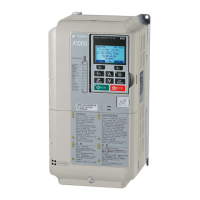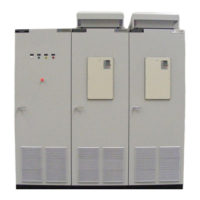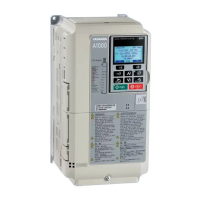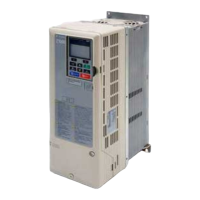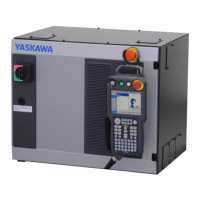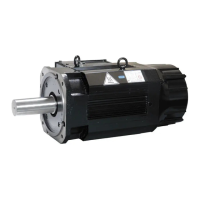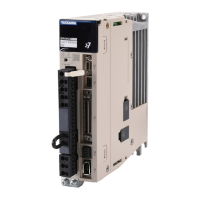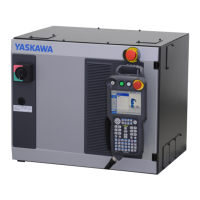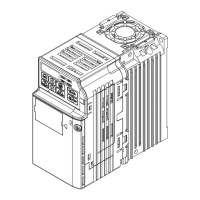8.5 Installing Peripheral Devices
386 YASKAWA ELECTRIC SIEP C710616 27C YASKAWA AC Drive A1000 Technical Manual
◆ Installing a Motor Thermal Overload (oL) Relay on the Drive Output
Motor thermal overload relays protect the motor by disconnecting power lines to the motor due to a motor overload
condition.
Install a motor thermal overload relay between the drive and motor:
• When operating multiple motors on a single AC drive.
• When using a power line bypass to operate the motor directly from the power line.
It is not necessary to install a motor thermal overload relay when operating a single motor from a single AC drive. The
AC drive has UL recognized electronic motor overload protection built into the drive software.
Note: 1. Disable the motor protection function (L1-01 = 0) when using an external motor thermal overload relay.
2. The relay should shut off main power on the input side of the main circuit when triggered.
■ General Precautions when Using Thermal Overload Relays
The following application precautions should be considered when using motor thermal overload relays on the output of
AC drives in order to prevent nuisance trips or overheat of the motor at low speeds:
1. Low speed motor operation
2. Use of multiple motors on a single AC drive
3. Motor cable length
4. Nuisance tripping resulting from high AC drive carrier frequency
Low Speed Operation and Motor Thermal oL Relays
Generally, thermal relays are applied on general-purpose motors. When general-purpose motors are driven by AC drives,
the motor current is approximately 5% to 10% greater than if driven by a commercial power supply. In addition, the
cooling capacity of a motor with a shaft-driven fan decreases when operating at low speeds. Even if the load current is
within the motor rated value, motor overheating may occur. A thermal relay cannot effectively protect the motor due to
the reduction of cooling at low speeds. For this reason, apply the UL recognized electronic thermal overload protection
function built into the drive whenever possible.
UL recognized electronic thermal overload function of the drive: Speed-dependent heat characteristics are simulated
using data from standard motors and force-ventilated motors. The motor is protected from overload using this function.
Using a Single Drive to Operate Multiple Motors
Turn off the electronic thermal overload function. Please refer to the appropriate product instruction manual to determine
which parameter disables this function.
Note: The UL recognized electronic thermal overload function cannot be applied when operating multiple motors with a single drive.
Long Motor Cables
When a high carrier frequency and long motor cables are used, nuisance tripping of the thermal relay may occur due to
increased leakage current. To avoid this, reduce the carrier frequency or increase the tripping level of the thermal
overload relay.
Nuisance Tripping Due to a High AC Drive Carrier Frequency
Current waveforms generated by high carrier frequency PWM drives tend to increase the temperature in overload relays.
It may be necessary to increase the trip level setting when encountering nuisance triggering of the relay.
WARNING! Fire Hazard. Confirm an actual motor overload condition is not present prior to increasing the thermal oL trip setting.
Check local electrical codes before making adjustments to motor thermal overload settings.
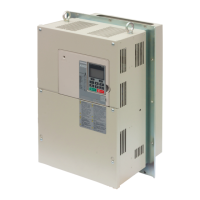
